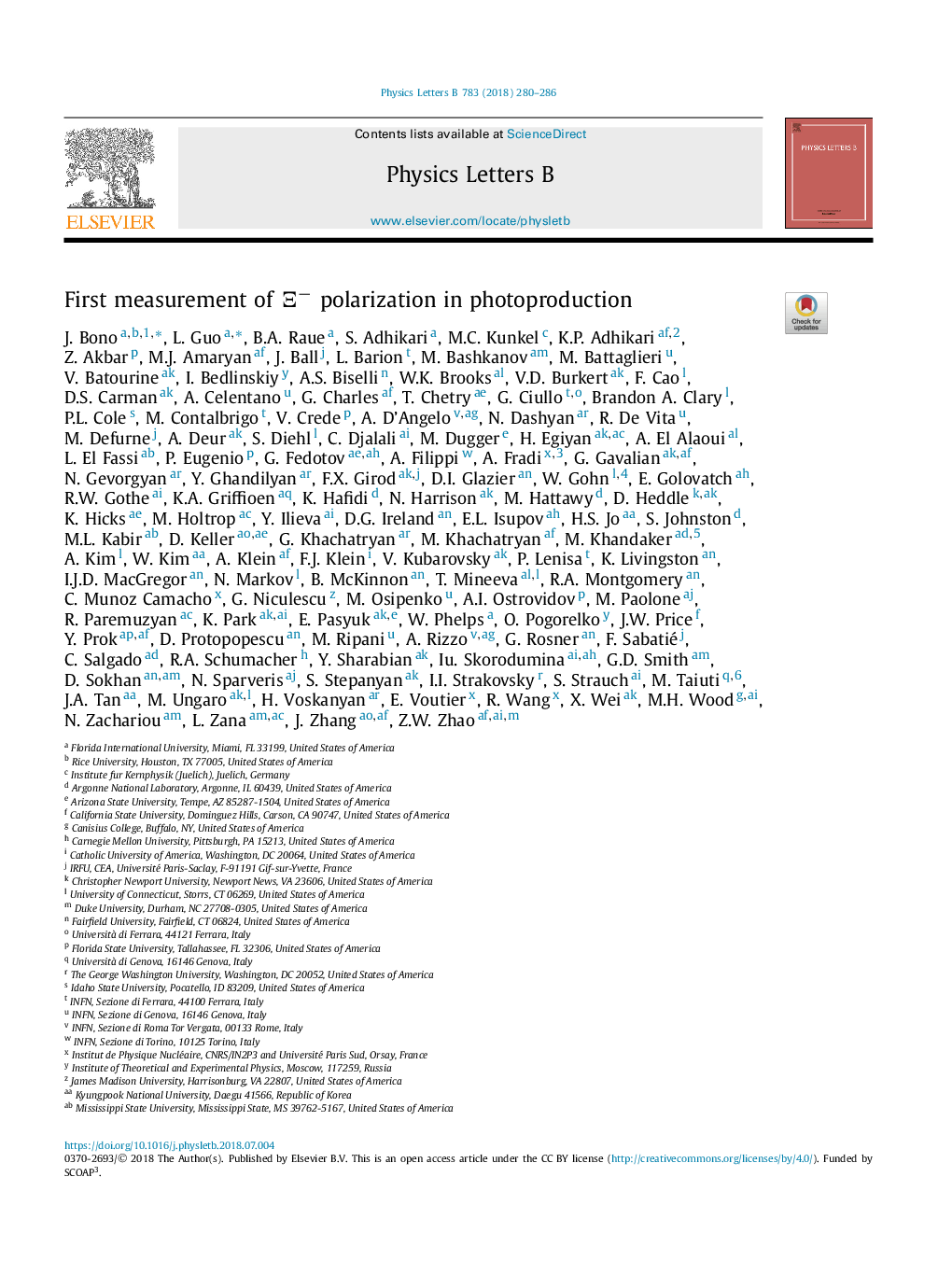| Article ID | Journal | Published Year | Pages | File Type |
|---|---|---|---|---|
| 8186246 | Physics Letters B | 2018 | 7 Pages |
Abstract
Despite decades of studies of the photoproduction of hyperons, both their production mechanisms and their spectra of excited states are still largely unknown. While the parity-violating weak decay of hyperons offers a means of measuring their polarization, which could help discern their production mechanisms and identify their excitation spectra, no such study has been possible for doubly strange baryons in photoproduction, due to low production cross sections. However, by making use of the reaction γpâK+K+Îâ, we have measured, for the first time, the induced polarization, P, and the transferred polarization from circularly polarized real photons, characterized by Cx and Cz, to recoiling Îâs. The data were obtained using the CEBAF Large Acceptance Spectrometer (CLAS) at Jefferson Lab for photon energies from just over threshold (2.4 GeV) to 5.45 GeV. These first-time measurements are compared, and are shown to broadly agree, with model predictions in which cascade photoproduction proceeds through the decay of intermediate hyperon resonances that are produced via relativistic meson exchange, offering a new step forward in the understanding of the production and polarization of doubly-strange baryons.
Keywords
Related Topics
Physical Sciences and Engineering
Physics and Astronomy
Nuclear and High Energy Physics
Authors
J. Bono, L. Guo, B.A. Raue, S. Adhikari, M.C. Kunkel, K.P. Adhikari, Z. Akbar, M.J. Amaryan, J. Ball, L. Barion, M. Bashkanov, M. Battaglieri, V. Batourine, I. Bedlinskiy, A.S. Biselli, W.K. Brooks, V.D. Burkert, F. Cao, Z.W. Zhao,
